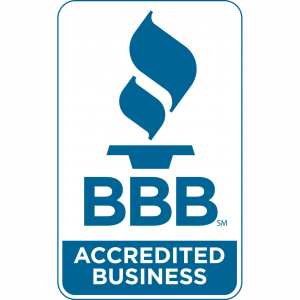Get an Offer in 2 Minutes!
No Registration, Phone Number, or Email Required
Get Cash for Houses in Mabank, Texas!
The traditional process of selling your house can be a real drag. You have to fix up your house, find a real estate agent, and wait as they list it on the market. Then you still have to wait for the agent to find a buyer who will qualify for a bank loan. Finally, you’re at the mercy of the home inspector and the banks, who are in no hurry to close on the deal.
With OutFactors, you can get a cash offer on your Mabank house quickly and easily. Our cash for house programs make the process of selling a home ridiculously easy. If you begin now, you’ll be sitting at a table signing the closing documents and collecting the cash for your house 10 days from now.
You can get an all-cash offer from OutFactors without disclosing any of your personal information. We don’t require registration, email address, or telephone number – not even your name! Just enter your address and answer a few questions about your house. Get your no-obligation cash offer now!
Sell Your Home for Cash in 2 Minutes or Less
WHAT THEY SAY…
What are our clients saying about us?
History of Mabank, Texas
Railroad Community to Lakeside Suburb
Mabank is a small rural community that is a far southeastern suburb of Dallas, Texas, and is located in Kaufman, Henderson, and Van Zandt counties. The community is about 54 miles from downtown Dallas, 16 miles southeast of the City of Kaufman, 18 miles northwest of the City of Athens, and is bisected by US Highway 175.
Lorenzo D. Stover is recognized as one of the first settlers to arrive in the area when he established a homestead in 1846. Other settlers followed but it wasn’t until the arrival of John R. Jones in 1887, a businessman from nearby Goshen, that a town was formalized. Jones purchased a large parcel of land that he had platted, and a townsite was created. Jones named the newly created community Lawn City after a popular cotton dress fabric he sold in his shop. Late in that same year, the community was officially granted a post office but since there was already another post office named Lawn City in Texas, the community name was changed to Lawndale.
Over the next 15 years, the community of Lawndale slowly grew and prospered but that ended in 1900 when the Southern Pacific Railroad rail line was constructed one mile from the town. The Southern Pacific Railroad was granted a right of way by the Mason-Eubank Ranch’s proprietors, G.W. Mason and Thomas Eubank. Realizing the economic potential created by having a rail line running through their land, they had one square mile of the land platted and a townsite created around the railroad depot. They named their newly created town Mabank, a mix of the names Mason and Eubank.
Mason and Eubank established the Mabank Land Company in August 1900 to sell lots and land in their newly platted town. With a railroad depot and fertile soil, Mabank began to attract people almost immediately. In the early 1900s, the town was officially granted a post office and ambulance service. The Eubank funeral home was also opened. Seeing the advantages of the railroad, most of Lawndale’s residents and businesses relocated to Mabank. Over the next few years, Lawndale faded out of existence.
During this period, railroads were major economic drivers and Mabank quickly became the regional business and shipping center for local farmers. As Mabank grew, many new businesses were established including a canning operation in 1907. In 1909, the Mabank Banner newspaper started publishing. By the year 1910, the population exceeded 400 people and Mabank had three churches, a Masonic lodge, a public library, and a baseball club. Mabank was officially incorporated in October 1911.
Over the next 20 years, Mabank remained a regional economic center supporting the local farmers. During this time, the principal crop was cotton but between 1917 and 1925, oil exploration became a prevalent economic activity. This proved futile as oil was never discovered in the area. By the mid-1930s, the population of Mabank had risen to about 930 people and was home to approximately 70 businesses. The first bank was opened in 1937.
Unlike many small North Texas communities, Mabank did not undergo a major downturn before or after World War II but did enter a period of stagnation. The population was approximately 980 at the end of the war and fell slightly to approximately 890 residents by 1955. The community grew slightly over the next 10 years and by the year 1965, the population had again increased to approximately 990 people. During this time, the number of businesses also remained rather consistent at nearly 40.
The construction of the Cedar Creek Reservoir in 1965 on the west side of Mabank ushered in a period of growth and expansion. The reservoir turned Mabank into a lakeside community which attracted retiring seniors as well as young families seeking an amenity-filled lifestyle within commuting distance to the growing Dallas businesses district. By 1976, the population of Mabank had increased to 1,500 residents and by the year 1990 was home to over 1,730 people. The growth and expansion continued and by 2000, the population had reached 2,150 people. Over the next 10 years, growth accelerated. By 2010, Mabank was home to over 3,000 people.
Today, Mabank is a growing but mature lakeside suburb that covers 7.63 square miles and has over 4,500 that call the city home.
Pay Cash for Houses Mabank TX | Cash Home Buyer | OutFactors – Dallas Fort Worth, Texas









